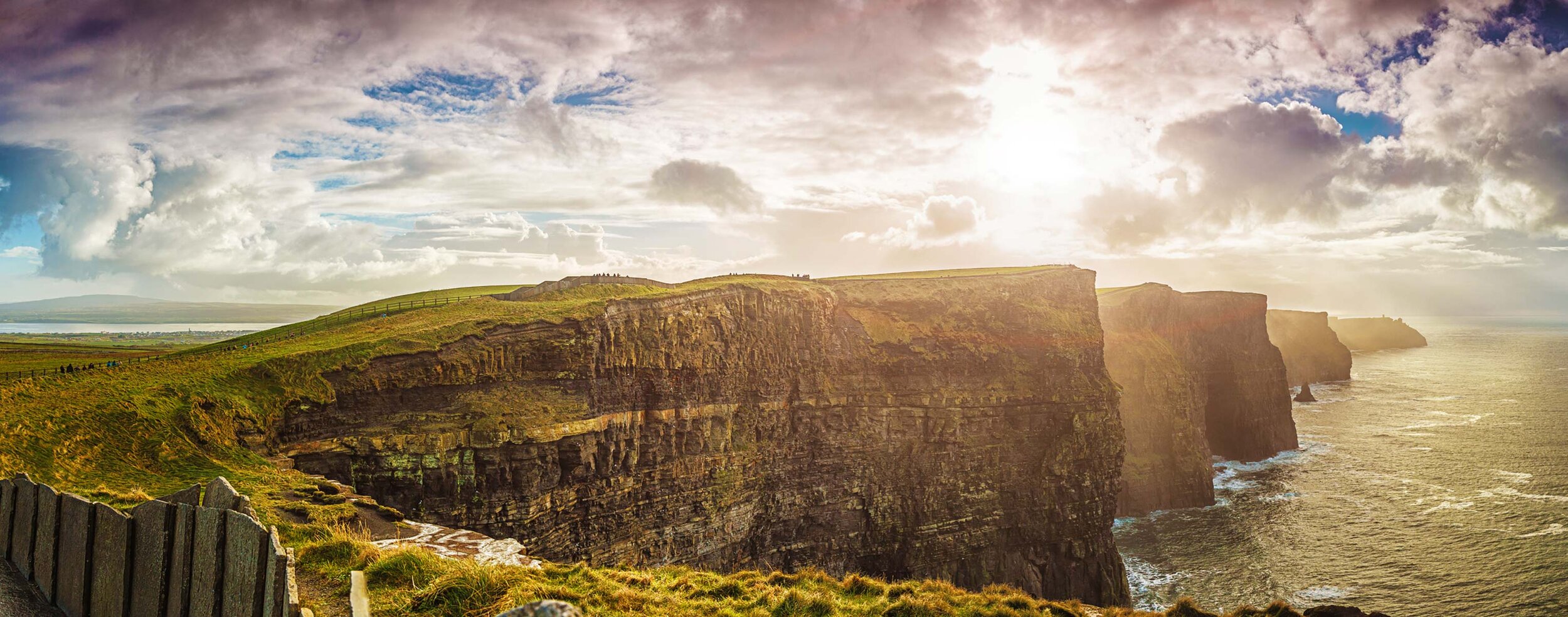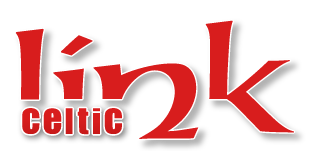
Celtic Languages…
Explore the languages the Celtic Nations…
Introduction
Language is one of the defining characteristics of the Celtic identity. This is because the Celtic languages are very distinct from the others in the Indo-European family, namely the Germanic (e.g. English, German) and Romance (e.g. French, Italian, Spanish) tongues.
The Celtic languages themselves can be split into two groups – Continental (spoken on the European continent) and Insular (spoken in the British Isles and Brittany in France). The former are long extinct but the latter are very much still alive, albeit in varying degrees of health. That makes language powerful cultural ‘glue’ in the six Celtic nations.
Four of the six Insular Celtic languages – Irish, Welsh, Gaelic and Breton – are described as ‘living languages. Cornish and Manx went extinct in the modern era, but efforts to revive and promote the languages have been a key tool for reawakening Celtic identity in those areas.
In this section you’ll learn about each of those six separate, but connected languages. We also look at the people and organisations keeping them alive, promoting them and encouraging a new generation of Celts to embrace their roots through learning their native tongue. And we’ll also hear directly from those in the front lines of the Celtic language world.
Brittany (Breton - Brezhoneg)
Breton came to this part of northwestern France with migrants from Britain in the 5th -6th centuries AD. The language has much in common with Welsh and Cornish. Breton was the dominant language in the region for several hundred years, before going into decline from the 16th century.
Government efforts to stamp out all minority languages in the name of promoting French national unity intensified from the middle of the 19th century and Breton was banned from schools for 100 years. However, in 1951 a law was passed to allow for Breton language and culture to be taught in schools and the language revival movement has gathered steam since then.
The official status of Breton remains precarious, however. Although it is recognised as a minority language by the EU, it has no official status under French law and is not a recognised regional language. Nevertheless, there are estimated to be 210,000 native speakers today, mainly in the west of the region, with around 35,000 using it as their everyday language.
Some words to get you started:
Breton Brezhoneg
Welcome Degemer mat
Good morning Demat
How are you? Mat an traou?
Goodbye Kenavo
Please Mar plij
Thank you Trugarez
Links:
Breton Language Resources http://eurolinguiste.com/breton/
Learn Breton https://www.loecsen.com/en/learn-breton
Cornwall (Cornish - Kernewek)
Cornish, closely related to Breton and Welsh, was the language of the southwest tip of Britain for centuries. However, it was pushed further and further west by the encroaching English from the 15th century until it effectively died out as a first language in the late 18th century. It is said – though this is energetically debated by scholars – that one Dolly Pentreath of Mousehole in west Cornwall was the last person to speak Cornish as their first language. She died in 1777.
Revival started in the early 20th century, and by 2002 Cornish was recognised by the UK government under the European Charter for Regional or Minority Languages. Since then, the council has funded bilingual road signage and Cornish is taught in some primary schools.
A growing body of Cornish music and films reflects energetic efforts to promote the language today. However, there is a long way to go. In the latest census, only around 600 people claimed fluency in Cornish, with estimates that some 3,000 have some ability in the language. That represents well under 0.5% of the population.
Some words to get you started:
Cornwall Kernow
Cornish Kernewek
Hello Dydh da
OK Da lowr
Goodbye Duw genes
Please Maar pleg
Thanks Meru ras
Cornwall forever! Kernow bys vyken!
Links:
Cornish Language Board http://www.kesva.org/
Go Cornish https://gocornish.org/
Ireland (Irish - Gaeilge)
The Irish language has a long and very rich history and has the oldest vernacular literature of any in Western Europe. Irish Gaelic was also exported to Scotland and the Isle of Man, whose languages grew up as a variant of Gaelige. While English made significant inroads from the 18th century onwards, Irish was the majority language of the island until the 19th century.
The Gaelic revival began in the early 20th century, spurred on by the foundation of the Irish Free State in 1922. Today, Irish has a unique status among Celtic languages in being the national and first official language of a country - the Republic of Ireland. It is also one of the official languages of the European Union.
There are estimated to be around 60-80,000 native speakers – around 10% of the population of the Republic - concentrated in western and northern counties. However, some 40% of the population claimed some ability to speak the language in the latest census. Irish is a compulsory subject in all schools that receive public funding and there is a popular Irish language television station.
Some words to get you started:
Irish language Gaeilge
Hello Dia duit
How are you? Conas ata tu?
Goodbye Slan
Welcome Failte
Please Le do thoil
Thank you Go raibh maith agat
Cheers Slainte
Links:
Irish Language Board https://www.forasnagaeilge.ie/?lang=en
Easy Irish https://www.rte.ie/easyirish/index.html
Isle of Man (Manx - Gaelg)
Manx is closely related to Irish and Scottish Gaelic and came to the island in the 4th and 5th centuries AD with Irish monks and traders. By the 15th century, the Isle of Man had come under and English administration and with official documentation in Latin or English, Manx remained an unwritten language.
Use of the language continued to decline and the last native speaker died in 1974 bringing the extinction of Manx as a first language. However, like other Celtic languages, the second half of the 2oth century saw efforts to revive Manx.
The Manx Language Unit was formed in 1992 and a few years later Manx was recognised under the European Charter for Regional or Minority Languages. Efforts to promote the language have intensified, particularly with the establishment of the government-funded Culture Vannin. Many schools now teach Manx and adult learning classes are increasingly popular.
Ability in the language troughed in the 1960s and it is estimated that around 1,800 people – just over 2% of the population – now have some ability in the language.
Some words to get you started:
Isle of Man Ellan Vannin
Hello Moghry t’ou
How are you? Kys t’ou?
Goodbye Slane Ihui
Please Cur taitnys da
Sorry My saillt
Thank you Gura mie ayd
Links:
Culture Vannin https://www.culturevannin.im/
Manx Language Network https://www.learnmanx.com/
Scotland (Scottish Gaelic - Gaidhlig)
Background
Descended from Irish Gaelic and brought to Scotland by Irish settlers, at one time almost all of the Scottish population spoke Gaelic. A rich heritage of music and folklore developed over the centuries, despite the suppression of the language from the 18th century in the wake of the Jacobite uprisings and subsequent Highland Clearances.
While going into sharp decline in eastern and southern Scotland, the language retained a strong foothold in the northern and western parts of the country. The Outer Hebrides is Gaelic’s main stronghold with more than 50% of the population reported to be Gaelic speakers while there are also significant pockets in Inverness, the Highlands and the city of Glasgow.
Today there are some 60,000 Gaelic speakers in total, around 1% of the population. It is recognised as a minority language and bilingual signs are appearing throughout Gaelic-speaking areas, particularly in the Highlands and Islands. And the language remains at the core of a thriving Gaelic culture that includes music, dance, arts and crafts.
One unusual feature of Scottish Gaelic is that it is recognised as a minority language in another country – namely, Canada. The majority of speakers, around 2,000, are in Nova Scotia where some 25,000 Scottish Gaelic speakers settled in the 1770s. Cape Breton Island, off the east coast of Nova Scotia, is a particular stronghold.
Links:
Learn Gaelic https://www.learngaelic.net/
Gaelic courses https://www.learngaelic.net/fios/index.jsp
Wales (Welsh - Cymraeg)
Welsh is one of Europe’s oldest living languages. However, when Wales was legally incorporated into England in the mid 16th century, efforts were made to suppress the native language. Yet as late as the mid 19th century, the vast majority of the population would still have been Welsh speakers.
Although the language went into steady decline thereafter, recent decades have seen the tide turn. The language was given a significant boost In the 1990s when Welsh was given equal status with English in the public sector. Today, of the six Celtic languages, Welsh is undoubtedly in the most robust health. Wales is officially bilingual with Welsh having equal status to English. The most visible reminder of that fact is that all road signs are in both languages.
Estimates for the number of Welsh speakers vary, but a survey by the Office of National Statistics at the end of 2018 showed that 874,000 people are able to speak the language, around 29% of the population. The language is widely used in the public sector, something that the government is keen to promote. The official goal is to boost the number of Welsh speakers to 1 million by 2050.
Some words to get you started:
Wales Cymru
Welsh language Cymraeg
Good morning Bore da
Goodbye Hwyl
Please Os gwelwch yn dda
Thanks Diolch
Links
Welsh government website https://cymraeg.gov.wales
Learn Welsh Online https://www.learn-welsh.net/
Open University https://www.open.edu/openlearn/languages/welsh/

